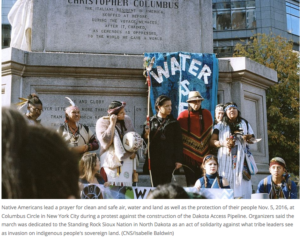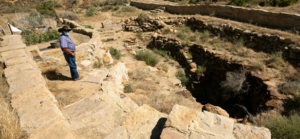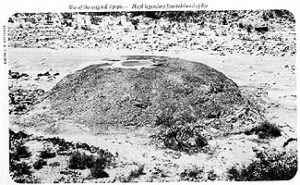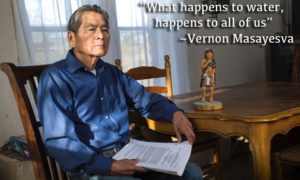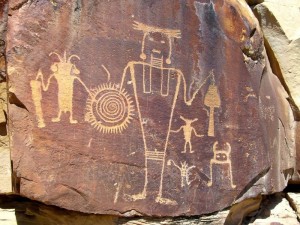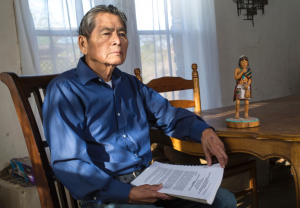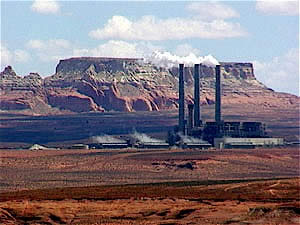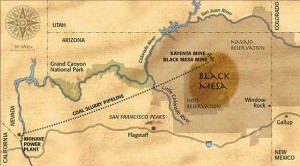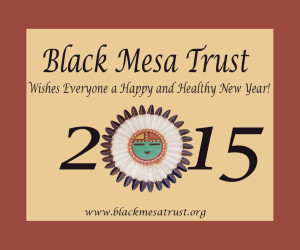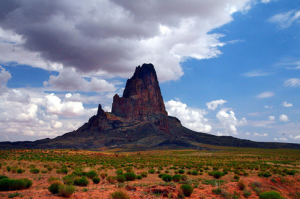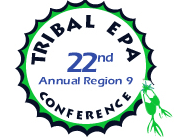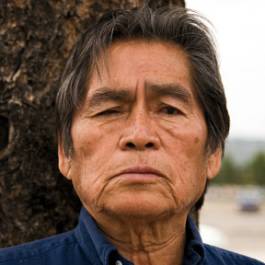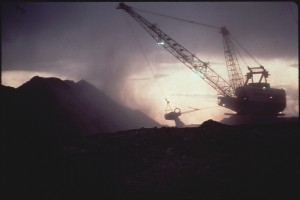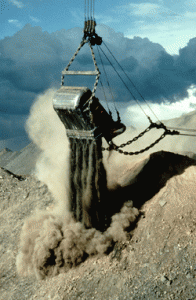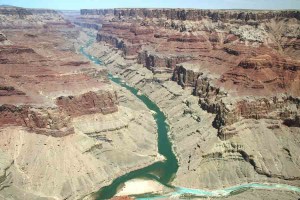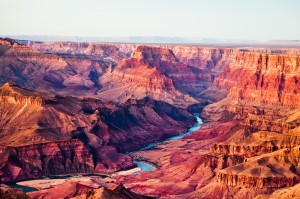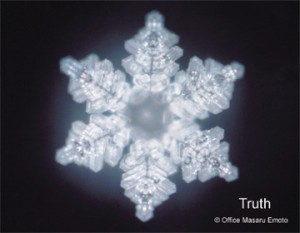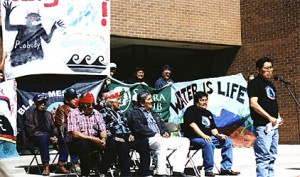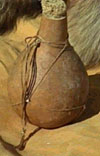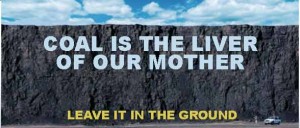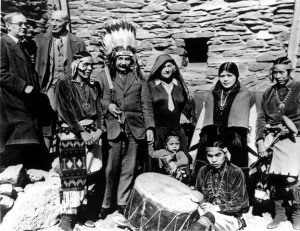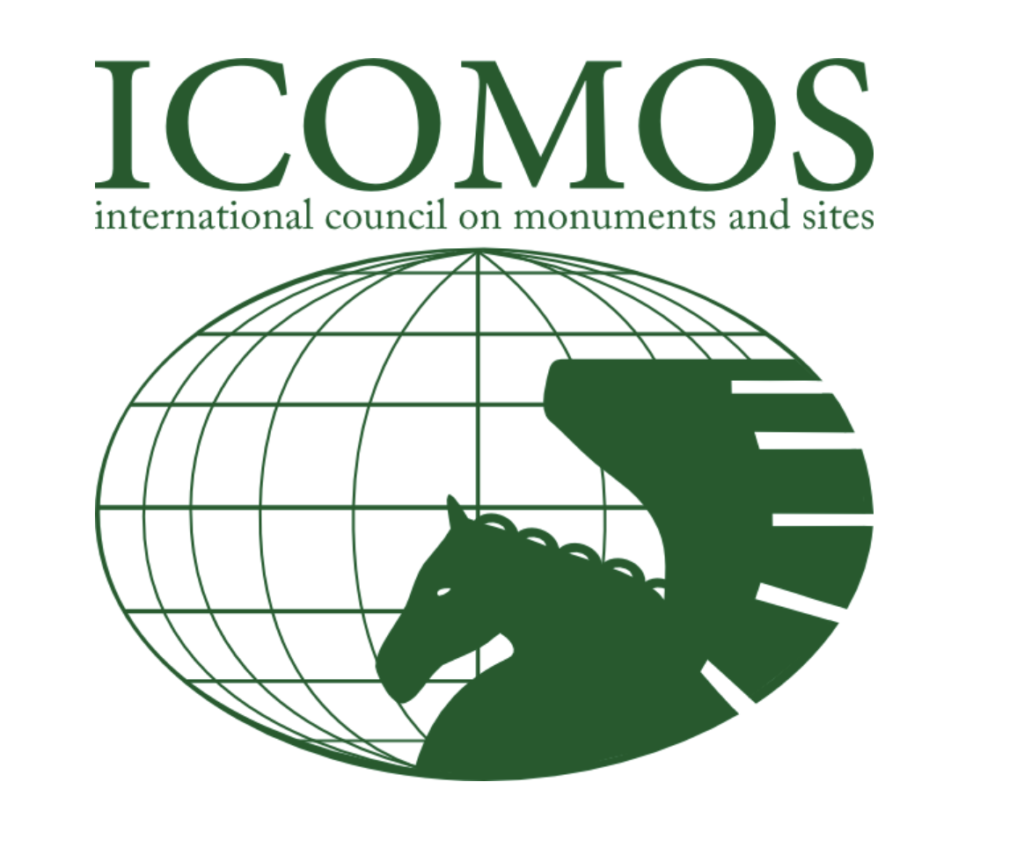
BLACK MESA TRUST
March 22, 2023
FOR IMMEDIATE RELEASE
Heritage Shield Award to Protect Sípàapu
On behalf of the various indigenous tribes associated with the Colorado Plateau, representatives from the International Committee On Monuments and Sites International Science Committee (ICOMOS ISC), a non-governmental international organization dedicated to the conservation of the world’s monuments and sites, ICOMOS ISC will meet with Black Mesa Trust (BMT), a Hopi Grass Roots Organization, on Saturday, March 25, 2023, to recognize the Sípàapuni as an important cultural place and award it the ICOMOS ISC Water and Heritage Shield. In receiving the ICOMOS ISC Water and Heritage Shield, the Sípàapu will become the first in the world to receive this honor.
The purpose of the Shield is to help the public become aware of the significance of water and indigenous sacred sites all over the world and the right to cultural and historical memory.
”You came from far away to honor Sípàapu as culturally significant and worthy of protection.” Said Vernon Masayesva, BMT Founder and Director. “You have put an arrow in our quiver to be used to save Sípàapu, and other sites in the Lower Colorado River ecosystem.”
Sir Diederik Six, Vice President of ISC Water and Heritage Bureau, and Former President of the Royal Dutch Historic Society will give the Shield award to the Black Mesa Trust in recognition of Hopi history and tradition in managing water and water-related heritage from time immemorial.
Sir Diederik Six will be accompanied by Sergio Augusto Ribeiro, Director General for International Centre on Water and Trans-disciplinarity, Henk van Schalk, Heritage Ambassador for ICOMOS, Van Schalik, Water and Heritage Ambassador for ICOMOS, and Mona Polacca, Indigenous Water Ethics Coordinator.
The hour-and-a-half event will take place at Country Inn & Suites (2nd Floor Conference Room,
Mikes Pike St., Flagstaff, AZ) beginning at 2:00 p.m Arizona Time.
While the in-person presentation is by invitation only, the event can be viewed virtually by Zoom at the following link:
https://us06web.zoom.us/j/81035304758?pwd=cWhuSlVTMXNxOUowUWRBQStTSTRxdz09
Speech by Vernon Masayesva in support of Sípàapu Heritage Shield Award
It is a great honor to welcome you to Ӧngtupkya, Hopi name for Salt Canyon – Grand Canyon.
Grand Canyon is one of the wonders of Mother Earth. For me to wonder, not just to know, but to
grow personally.
As you look down into the Canyon, notice horizontal layers of rock. According to geologists the
bottom layer is close to 2 billion years old. Wonder what the land looked like 2 billion years ago?
How was it formed? I wonder. I say to myself, it must be the rivers, the Colorado River and the
tributaries that flow into the Big River. The rivers are still working.
So, it is the unlimited power of water. What is water? We are witnessing today the destructive
power of water. Scientists say it is climate change that is causing it.
Our belief about the nature of water is that water has many faces, ranging from a benevolent face
to a destructive face. Water reacts to human emotion. Water has memory. It is indestructible.
Water is alive, it is life. All sentient beings nurse from Mother Earth and live until their lives end.
Only the physical body dies. The water in our body ascends in gladness to the Celestial Sea.
There we rest and join our ancestors. Then we descend to earth as rain, snow, fog, and mist to fill
our mother’s breast with fresh water to sustain life.
This is why we believe we are the hydraulic water cycle. We are not separate from it. Our songwriters
base their message on prayer for water. If our hearts are together, the rains will come.
This is why our ancestors were able to survive to this day farming in a desert. There are no rivers
or lakes to water their crops.
It is water that forms our religious beliefs and traditions, which shapes our attitudes and our
behavior. My wife and I visited the Netherlands. Everywhere is water. So, the people don’t
celebrate water. But they must have other problems. Indigenous people living in tropical lands
have much rain, so do they dance to stop the rain!
When I look down into the Canyon, I wonder why it is a cradle of our present civilization known
as the 4th world. It makes me wonder about the previous world. I wonder if there is a fifth
world? Are there more worlds?
Sípàapu, located at the bottom of Ӧngtupkya, is the place of emergence to what is now called the
Colorado Plateau. This was the place they were looking for to begin a new civilization. It is a
sanctuary for mankind we call “waaki”. It is symbolized by a desert turtle. Here the ancestors
met a man farming in a desert.
His name is Ma’sau. The ancestors were amazed how he was able to survive farming on what
looked like a worthless piece of land. The wise leader said this is the place we want to settle. So,
they asked Ma’sau for permission to stay to start a new civilization.
Ma’sau answered; he cannot give permission, as he does not own the land. He was put here to
take good care of Earth Mother. He said it is up to you to decide. But if you decide to stay, they
must follow his way of life, which is simple, but very hard.
The ancestors decided to stay and to follow his path. They made a covenant with Ma’sau.
Ancestors then asked, will you be our leader? He said no. There may be a time when Hopi
people will abandon his path and break the covenant. When that happens, he will return and take
over the land. The ancestors will pack up their bags and leave this area.
Makes me wonder, who was Ma’sau?
You are here to honor us by recognizing Sípàapu as an important traditional cultural place. In so
doing, you are honoring indigenous peoples all over the world. Each have their Sípàapu, just as
you have your place of emergence. I will share with you a passage from a book. In” Blackfoot
Physics” by David F. Peats, a theoretical physicist.
“As you sit with native people, walk in nature, and spend time at sacred sites an unusual
transformation of consciousness takes place. For a time at least, you can begin to hear, see, feel,
touch, and taste the world in a profoundly different way; you can think and perceive with a
different mind so that your ego can, temporarily at least, blend into that of other people.
Thus it may be that, for a few moments, or hours, or even days, we can enter into the heart and
head and body of another culture. We will always return to our own world, for that is where our
roots lie. Nevertheless, on our reentry, we may be changed in some subtle yet important way.
And, sometimes, when we spend time living within that other culture, we are able to look back
upon our own world and see it through alien eyes, appreciate its limitations as well as its beauty
and attraction.”
My final message is: mankind needs to embrace a new paradigm about the nature of water. A
paradigm that mankind is not Master of Water, water is the master, so we must learn to work with
and respect water.
Modern scientists see water crisis happening all over the world. They believe it is caused by
climate change. Hopi believe it is a symptom of Earth Mother who is ill and crying out for help.
Yet, the world leaders, including our President, are not listening.
We have a story about a water snake. It represents the ocean. It is getting restless. Instead of
keeping it calm, we are poking it, causing the snake to roll over. The ancestors say the Earth will
turn upside down. The North Pole will become the South Pole. The Netherlands will turn into a
desert and the earth could die.
But, does it have to be this way? My uncle told me that one morning as we look below the
Mesa, we will see many people crawling on their knees to get here. They will be coming, seeking
sanctuary. I wonder what this means?
Perhaps it means people from all parts will come to the Colorado Plateau to share their
knowledge, their skills, to form the 5th world. Mankind is standing at the 11th hour of a possible
ending of our Mother Earth if we do not heed her warning. This is inscribed on Prophecy Rock, a
boulder across the ancient village of Orayvi.
It does not have to end. There is hope. An elder said no one is going to come and save you. Look
into a mirror and you will see the person you are waiting for. The Hopi tribe is a tiny group of
people, yet we have much to share. But who will listen? We are just a grain of sand on a beach,
yet our religious practitioners are trying their best to keep the fire of hope burning.
Buddha said,
“a thousand candles can be lit by a single candle”. You have brought your candle to join us in
our mission of saving sacred sites all over the world.
Thank you for coming to honor us. May you return safely to your homeland.
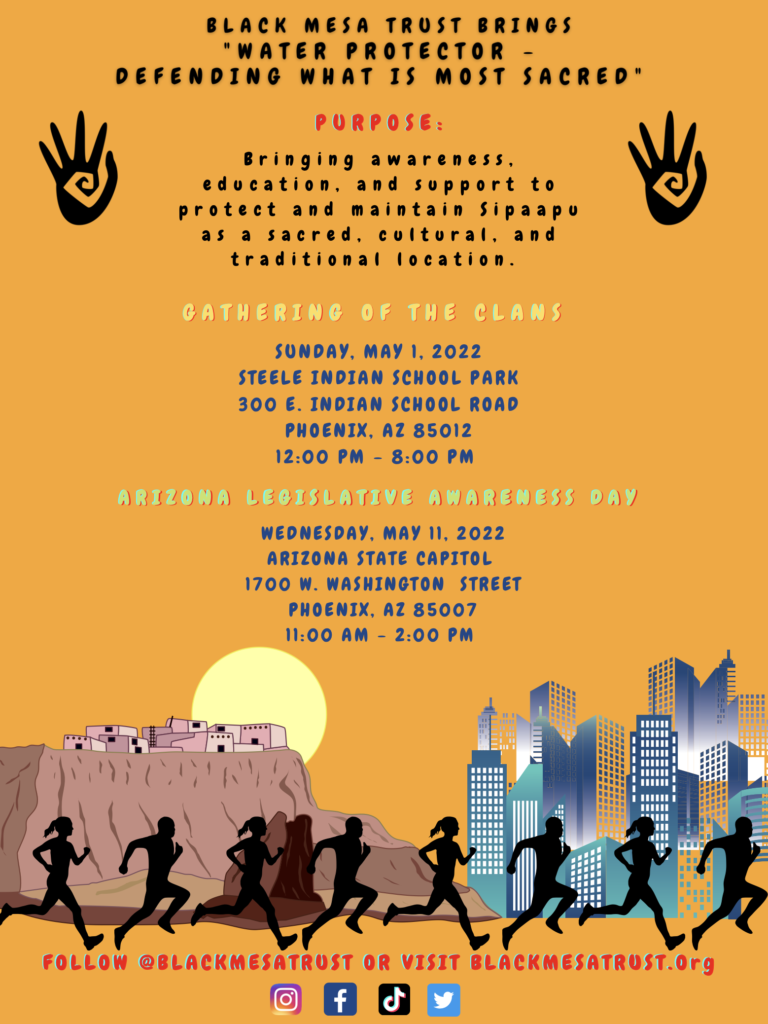
Black Mesa Trust presents
Gathering of the Clans
Water Protectors – Defending What is Most Sacred
Sunday May 1st 12-8pm
Steele Indian School Park 300 E. Indian School Road Phoenix, AZ 85012
Featuring music and entertainment from
Ryon Polequaptewa and Host Ed Kabotie
Welcome from Vernon Masayesva
Executive Director, Black Mesa Trust
Guest Speakers
Martin Harvier, President, Salt River Pima-Maricopa Indian Community
Myron Tsosie, Arizona State House of Representatives, District 7
SHARING OF RUNNERS JOURNEY
Bucky Preston
Carletta Tilousi – HAVASUPAI TRIBE
Carlton Albert–ZUNI TRIBE
Wendsler Nosie, Sr. or Naelyn Pike
Apache Strong Hold –SAN CARLOS TRIBE
Protecting Mother Earth and her inhabitants should be an administration priority for Biden by Terry Sloan
“We are at a critical crossroads in our human existence on Mother Earth, and we now have a chance to affect the impact that humans have, by reducing our ever-destructive footprint, minimizing and repairing any damage that we can, and restoring the ecological and environmental balance that Mother Earth’s ecosystems already had in place. May God bless and support our U.S. President Joe Biden and those working to protect our sacred Mother Earth.”
Read the full article here
https://www.ncronline.org/news/earthbeat/protecting-mother-earth-and-her-inhabitants-should-be-administration-priority-biden
Climate and water
‘Everything is drying up’: As springs on Hopi land decline,
a sacred connection is threatened…
The Hopi see influence of climate change — and suspect a link to coal industry’s groundwater pumping.
read the full article here:
https://www.azcentral.com/in-depth/news/local/arizona-environment/2020/12/07/drought-and-pumping-hopi-natural-springs-drying-up/5972599002/
Navajo Hopi Observer: Former Hopi chairmen
call on officials to ensure proper reclamation of mines
As federal trustee to the Hopi, the Office of Surface Mining, Reclamation and Enforcement (OSMRE) has a legal duty to ensure that lands and water damaged through years of mining are reclaimed in compliance with laws such as the Surface Mining Control and Reclamation Act and that such work is done in a timely manner. So far, OSMRE has failed to come close to meeting its obligation to ensure reclamation of either mine.
In June, former Hopi Chairman Vernon Masayesva and I wrote to the director of OSMRE’s Western Region to request that the agency comply with its trust responsibilities. The law requires OSMRE to treat the end of mining as a “significant mine permit revision.” This designation is critical. It will authorize a full environmental review that, for the first time in a half century, will require full consultation with and participation by both Hopi and Navajo to ensure a thorough review of reclamation activities. And it will establish a timetable for work to be carried out – so it does not languish any longer.
read the full article here:
https://www.nhonews.com/news/2020/oct/06/guest-column-former-hopi-chairmen-call-officials-e/
The fight for an equitable energy economy for the Navajo Nation
Diné activist Nicole Horseherder’s long quest for equity from the rise and fall of the coal economy.
In the 1990s, Vernon Masayesva, a former Hopi tribal chairman and a vocal critic of Peabody’s aquifer use, began hosting talks about coal’s impact on local water. He eventually formed a nonprofit called the Black Mesa Trust. It was during one of these meetings that Horseherder pieced together what had happened to the springs of her childhood. She had recently moved back to Black Mesa, after completing her master’s in linguistics from the University of British Columbia. At a meeting about how to drum up awareness of the water situation, a former tribal leader told her, “Somebody needs to do this work, and I think that person has to be you.” Horseherder didn’t hesitate.
read the full article here:
https://www.hcn.org/issues/53.2/south-coal-the-fight-for-an-equitable-energy-economy-for-the-navajo-nation?fbclid=IwAR2P8RKGE83T15GhoYSCx6wd2_yj0-zNpULhKa_F6I8uflR9inTyfO1Vbrg
The demolition of the largest coal-fired power plant in the Western US brings reflection, hope to the northern Navajo Nation
The move eliminates a major pollution source on the Utah-Arizona border, but 750 jobs, mostly filled by Native American workers, are going away
The coal mines on Black Mesa partially drained the massive Navajo Aquifer, drying up springs and water sources in a region where running water is not available in thousands of homes. Other water sources were contaminated, and Indigenous-led opposition groups had long advocated for the closure of the mines and power plant, including Black Mesa Trust, Diné CARE, Indigenous Action and ToNizhoniAni.
read the full article here:
https://www.sltrib.com/news/2020/12/19/demolition-largest-coal/
An open letter to President-Elect Joe Biden – December 14th, 2020
From BMT Executive Director Vernon Masayesva
December 14, 2020
President-Elect Biden
Delaware, USA
Dear Mr. President Elect Biden,
Hopi science, like Native American Sciences, have been around centuries before the birth of modern western science. Centuries ago, a Greek philosopher, Hippocrates, in “Air, water and places’’ recognized that man’s life in sickness and health is bonded with forces of nature, and that nature from being oppressed and conquered, must be treated as an ally and friend whose ways must be understood and whose counsel must be respected.
All citizens of the world today are confronted with a troublesome paradox; by exploiting our natural resource base, mankind is able to obtain food and fiber and other material that is essential to life, but by depleting and abusing our natural resources, we also lose spiritual substance that is no less vital to our well-being.
Hopi elders believe COVID-19 is caused by the fact that Mother Earth is sick and is crying out for
help, but no one seems to be listening. We continue to exploit the natural resources gifted to mankind to take care of Her. COVID-19, climate changes are systems of Her illness. Scientists will find a cure for COVID-19 but, other diseases will come again. In addition to this, mankind is facing the threat of nuclear war. The threat is written on Prophecy Rock, near the oldest continuously inhabited community in North America, on the Hopi Reservation in Northeastern Arizona.
I hope, in your message to the world, you will acknowledge the importance of Native science. Native Americans seem to be the forgotten people.
Today we are living in a chaotic world: Hopi elders teaches that out of chaos can come order.
Humankind is gifted with the ability to think so we can envision, create, and communicate to bring about a new world called the 5th World.
The Hopi elders say the time has come to intertwine modern science with native science, technology, and worlds religious faiths. Modern science has no heart and must be combined with Native science, which is the heart. The mind and heart must intertwine like it used to be long time ago.
Sincerely,
Vernon Masayesva
Former Chairman, Hopi Tribe & Hopi Member of the Village of Hotevilla, Arizona
kuuyi@aol.com office 928-255-2357
BREAKING NEWS – OCTOBER 4TH, 2018
BLACK MESA TRUST NEEDS YOUR SUPPORT TO JOIN SÍPÀAPU DEFENDERS
We, the descendants of ancient people, came here thousands of years ago to a safe place to raise children and to start a new way of life.
Our ancestors followed the Colorado River all the way up through the Grand Canyon and the Little Colorado River. There, they came upon a huge mound shaped like an anthill. Water was coming in and out of the mound. Some say, others followed the Rio Grande River all the way to Mesa Verde, then turned back and came to the Hopi mesas.
Here they came out of the Canyon and came to the Hopi mesas, and met Màasau, a farmer in a dry barren land. The ancestors received his permission to stay with him on the condition they take good care of Mother Earth and to follow his way of life.
This is why Sípàapu is called an umbilical cord to the Old World. A place of Emergence from the Third to the present Fourth World, a passageway to the spiritual world.
Sípàapu is the heart of Mother Earth some call Tuwanasavi, now known as the Colorado Plateau. The heartbeat is weakening. Water no longer comes in and out of the mound. It is dying.
The reason is caused by overuse of the Little Colorado River Basin water system by non-Indians, corporations, towns and cities in Coconino, Navajo, Apache Counties, and the State and Federal Governments.
Our right to carry on our religion, guaranteed under the U.S. Constitution, is being violated. We must now unite and act to defend Sípàapu. Without Sípàapu our civilization could die. Religious ceremonies, which are tied to Sípàapu will become meaningless.
You can act now by supporting a Proclamation to Save Sípàapu. The Proclamation will mandate the Federal Government to set aside Sípàapu as a Traditional Hopi Cultural Protected area.
Copies of the Proclamation and Petition to Save Sípàapu is available at our Village Community Administration Office. It is also available on the internet at www.blackmesatrust.org or our Facebook page.
Copies of the Proclamation and Petition to Save Sípàapu is available at our Village Community Administration Office. It is also available on the internet at www.blackmesatrust.org or our Facebook page. Please sign on to the Petition to “Save Sípàapu” and share this information with others.
Thank you,
Vernon Masayesva
Black Mesa Trust, Executive Director
PROCLAMATION TO PROTECT AND PRESERVE SÍPÀAPU
WHEREAS, we, members of independent self-governing villages of Lower Moencopi, Upper Moencopi, Hotevilla, Bacavi, Oraivi, Kykotsmovi, Shungopavy, Shipaulovi, Mishongnovi, Walpi, Sichomovi, Tewa, and Spider Mound hereby call upon the National Historic Landmark Program (NHLP) to officially designate Sípàapu as a Traditional Cultural Place (TCP); and
WHEREAS, it is the responsibility of all people, societies and communities living on the Colorado Plateau to protect the rich ecological, cultural landscape for foreseeable time; and
WHEREAS, the Colorado Plateau is facing industrial-governmental degradation and genocidal destruction of Native American historic sites, graves, and artifacts so that they may profit from vast coal, water uranium and oil resources; and
WHEREAS, Colorado Plateau is home to Hopi and twenty-two (22) different tribal groups who have cultural, historical ties to the region: and
WHEREAS, Sípàapu is central to Hopi religious beliefs and practices which are protected under the First Amendment of the U.S. Constitution and other relevant acts of U.S. Congress; and
WHEREAS, Sípàapu is crucial to the repository of our memories, and serves as living knowledge that provides comfort and reassurance as a rooted place between past and future and as a seedbed for historical insight and knowledge and as a catalyst of hope for the preservation and revitalization of Hopi civilization; and
WHEREAS, Sípàapu, the heart of Colorado Plateau— birthplace of the Fourth World of the Hopi nation—is dying due to the impounding of waters in the Little Colorado River Basin by corporations, The State of Arizona, northern Arizona county governments and towns; and
WHEREAS, the Arizona State court ruling in Re: The General adjudication of “All rights to Use Water in the Little Colorado River System and Source” could be disastrous to the health of Sípàapu; and
WHEREAS, it is essential that the U.S. government, which serves as trustee of natural resources of all tribal nations, affirms the continuity of Hopi heritage and memories by protecting and preserving Sípàapu as a living component of Hopi culture and a living symbol of our right to carry on our religion; and
WHEREAS, Orayvi, a thousand year-old village, considered to be the oldest continuously occupied community in north America is listed on the registry of NHL and is historically and culturally connected to Sípàapu; and
WHEREAS, the office of NHLP is responsible for nominating, conducting studies designating and coordinating landmark monitoring; and
NOW THEREFORE BE IT RESOLVED, that the Hopi Tribal Council expeditiously support the Peoples’ Proclamation by enacting a resolution; and
NOW THEREFOR BE IT RESOLVED, we, members of the Hopi tribe and independent villages, respectfully request NHLP to act expeditiously to protect Sípàapu the ancient shrine as a traditional Hopi cultural place using the National Historic Preservation Act of 1966, the American Antiquities Act of 1978, the International Treaty agreement between United State and Republic of Mexico (the Treaty of Guadalupe Hidalgo of 1848) and the U. N. Universal Declaration of Human Rights of 1948; and
NOW THEREFORE BE IT RESOLVED, that this Proclamation is made in memory and honor of the ancestors who brought us here to a safe place, and created a sanctuary for all mankind; and
BE IT FINALLY RESOLVED, that we call upon the United Nations to adopt The Declaration of Right to Historic Cultural Memory to the U.N. Universal Declaration of Human Rights of 1948
PLEASE SIGN AND SHARE THIS PETITION TO SAVE SÍPÀAPU
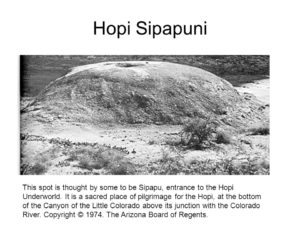
This spot is thought by some to be Sipapu, entrance to the Hopi Underworld. It is a sacred place of pilgrimage for the Hopi, at the bottom of the Canyon of the Little Colorado above its junction with the Colorado River. Copyright © The Arizona Board of Regents.
Black Mesa Trust and Waterkeeper Alliance
As children of water, we raise our voices in solidarity to speak for all waters. Water, the breath of all life, water the sustainer of all life, water the voice of our ancestors, water pristine and powerful. Today we join hands, determined to honor, trust and follow the ancient wisdom of our ancestors whose teachings and messages continue to live through us. The message is clear: Honor and respect water as a sacred and life-giving gift from the Creator of Life.Water, the first living spirit on Earth. All living beings come from water, all is sustained by water, all will return to water to begin life anew. We are of water, and the water is of us. When water is threatened, all living things are threatened. What we do to water, We do to ourselves.
Vernon Masayesva is the Executive Director of Black Mesa Trust and Black Mesa Waterkeeper, a Hopi Leader of the Coyote Clan and a former Chairman of the Hopi Tribal Council from the village of Hotevilla, one of the oldest continuously inhabited human settlements in the Americas. Masayesva received his B.A. degree from Arizona State University in Political Science and a Masters of Arts from Central Michigan University in 1970. He returned to Black Mesa of the Hotevilla Bacavi Community School, the first Indian controlled school on Hopi as the lead educator of the school systems. In 1984, he was elected to the Hopi Tribal Council and then served as Chairman from 1989. He immersed himself in the tangled intricacies of the coal mining on Black Mesa and the Hopi – Navajo land dispute, and is widely respected on and off the reservation.
https://waterkeeper.org/waterkeeper/MDAxMWEwMDAwMEV2UVFKQUEz/black-mesa-waterkeeper/
For Immediate Release
Black Mesa Trust Applauds Decision to Shutter Navajo Generating Station
(Kykotsmovi, Ariz.) Feb. 13, 2017 – “I am very happy and relieved that Black Mesa Trust’s struggle to save sacred waters on Black Mesa will finally end in 2019,” said Black Mesa Trust Executive Director Vernon Masayesva.
“Black Mesa Trust was founded in 1998 with the singular mission of saving drinking water stored deep under our sacred land. We will succeed, but the price for allowing industrial use of pristine drinking water has been unconscionably high,” he continued.
- Over 45 billion gallons of water stored in ancient aquifers is gone forever. This would have been enough water to sustain a Hopi population of 10,000 people for over 300 years, but it was gone in just 47 years.
- Many springs are now dry and an unknown number of others are contaminated. Some of the springs were used to conduct ceremonies.
- An unknown number of Hopi ancestral villages, burial sites, sacred shrines and petroglyphs have been destroyed. These were footprints of our ancestors who settled on Black Mesa over 1,000 years ago.
- Hundreds of acres of cedar trees have been uprooted by bulldozers. Cedars are used for purification and medicine.
- The dynamiting of coal seams has released an unknown quantity of methane gas. Coal fires may have been ignited and if so they are still burning, creating cave-like tunnels within the mesa.
- The extraction of billions of waters stored in highly-pressurized aquifers has caused thousands of sinkholes in the landscape.
- Impacts on the health of Diné (Navajo people) living downwind from the mine area and their livestock, their main source of livelihood, have never been objectively investigated.
- Nor has the impact of groundwater pumping on Siipapu, place of Emergence from the Third World to the Fourth World, located near the convergence of Little Colorado River and the main Colorado River been examined.
- Over 165 impoundment ponds built by the mining company have blocked the rainwater and snowmelt that used to flow through washes to Siipa’pu.
- Moencopi Wash, which once provided water for fields and crops, is bone dry most of the year. The impoundments were authorized by U.S. Army Corp of Engineers without full investigation of the environmental or cultural impacts or the possible effects on Moencopi farmers and endangered species. An investigation must be conducted and must include the outright sale of water leased from Hopi Tribe and Navajo Nation to owners of Mohave Generating Station without the knowledge of the Hopi Tribe.
Now that Peabody Energy’s coal strip mining has ended, we begin a new chapter. It is time to begin healing the ecological-cultural landscape.
We must hold the federal government, Peabody, and owners of Navajo Generating Station, which includes U.S. Bureau of Reclamation, accountable for leaving us with a devastated landscape, the irretrievable loss of drinking water, compromised aquifers and the destruction of cultural sites and artifacts, not to mention desecration of our ancestors’ burial sites.
A full investigation and congressional hearing on the scope, extent and damages caused by coal mining on Black Mesa must be held.
The Hopi and Diné must work together to call for economic restitution. We deserve to be compensated for the economic benefit bestowed on millions of Arizona rate-payers and utility companies while Hopi and Diné are living in abject poverty. Arizona State University’s Morrison Institute conducted an economic impact study that shows Arizona reaped over a trillion dollars in benefits due to delivery of water from the Colorado River to Phoenix and Tucson through the 330-mile open canal called Central Arizona Project. Not a penny went to Hopi and Diné on whose backs this was done, even though it was coal and water from Black Mesa that powered Navajo Generating Station, which was built in part to pump water for the Central Arizona Project.
For Hopi people the healing process must begin. The modern Hopi Trial Council must take responsibility for approving the coal lease, which treated water like a commodity that could be negotiated, leased and sold in direct violation of ancient Hopi beliefs that water is life, therefore sacred.
We thank the many environmental, religious organizations and individuals who helped us achieve this victory.
We thank the founders and members of Black Mesa Trust, some of whom have joined the spirit world.
Black Mesa trust, a non-profit 501(c)3 organization, has submitted a proposal to mitigate the impact of the loss of jobs and revenues generated by NGS and coal mining. It is available upon request to kuuyi@aol.com.
For further information, contact Vernon Masayesva, (928) 255-2356, kuuyi@aol.com
http://www.nhonews.com/news/2017/feb/14/update-ngs-owners-say-plant-will-close-2019/
http://www.azcentral.com/story/money/business/energy/2017/02/13/utilities-vote-close-navajo-generating-station-coal-plant-2019/97866668/
http://knau.org/post/ngs-close-end-2019#stream/0
Statement to the Hopi Tribal Council
by Vernon Masayesva
April 5, 2016
It is the responsibility of Secretary of Interior, Sally Jewell, to make sure that Peabody Energy, owners and investors Navajo and Mohave Generating Stations, pay full cost of all Hopi coal, cultural resources, and water related restoration requirements.
It was Interior that allowed Peabody to self-bond. That decision, combined with decades of U.S. decisions to defer honest enforcement of federal cultural and environmental protection laws, allowed damages to our land and cultural reclamation to be deferred, so Peabody and utility companies could make more money in the easy days, then in the end walk away. There should be no negotiation about this. Hopi Tribal Council should take action now to require the Secretary to obey the law, as it was intended, and that Interior will assume all obligations if Peabody succeeds in getting Chapter 11 bankruptcy protection.
There will be long lines of creditors trying to get pennies on the dollar what Peabody owes them, and many will use Congress to try to get federal dollars. The Secretary needs to overcome Congressional pressure to put other damaged parties at the head of the line and leave Hopi with a train wreck.
As we know, the U.S. Trust responsibility puts a unique burden on the federal government to make the Hopi Tribe whole – in other words, to pay the full cost of completely restoring the integrity of Hopi lands and waters and cultural resources. Furthermore, owners of NGS, Peabody Energy, Mohave Generating Station, Central Arizona Conservation Water District, and the State of Arizona must also bear the cost and in addition bring economic justice to Hopi and Navajo people in the form of restitution. There will be no second chance at this. Difficult as it may be for the us, we must now unite to bring legal and political action to insist that this be carried out.
We are the people that are the true subsidiaries of the energy and water delivery that has made the State of Arizona prosperous. Our land and the entire Colorado Plateau was declared by a Trilateral Commission a national sacrifice area for energy development and military purposes.
Declaration on the Right to Cultural Historical Memory
Protection and preservation of cultural and historic artifacts, sites and graves, and other vestiges of human experience and memory gives greater comfort and reassurance to the world and recognizes the urgent need for remedy, protection, and justice for endangered cultures and their related resources each and both of which are essential to the future of humanity.
Belongingness and interconnectedness inhabit all relationships, binding actions into one related whole, remembering the air the whole planet breathes. We know and daily experience that all things are profoundly interconnected and integrated. Actions far from us come near and reciprocally our actions reach afar, even at the same moment.
In the cause of human toleration and understanding, historical and cultural artifacts require protection and care by all people and societies. In their protection, conservation and preservation is assurance of shared meaning, of cooperation and communion in deeper human values, of the continuity of memory, and love – a celebration of high aspirations.
Knowing that any human without memory is lost; that memory is encoded in the historic/cultural artifacts, sites, burials and vestiges of peoples past and their descendant cultures; that humanity without memory entails a frightful retreat into sub-human brutality and nonexistence; and that the pace of that retreat increases with each precious artifact and monument lost for all time to the hate and greed of momentary demands, the Declaration on the Right to Cultural Historical Memory insists that the perpetual ongoing destruction of cultural memory must cease—that on behalf of all peoples everywhere the evolutionary flowering of the Great Tree of Human Rights to include the inalienable right to historical and cultural memory must be nourished and protected today as never before.
The ”Declaration on the Right to Cultural Historical Memory” significantly expands Human Rights to include specified cultural and historical protections outside those formally pertaining to ‘warfare’ and specifically provides moral, ethical. political, and economic frameworks to uphold and reaffirm existing protections and enhances them with new precedents.
Ratifying the ”Declaration on the Right to Cultural Historical Memory” will dramatically enrich the general basis of Human Rights to include these specified protections of cultural artifacts, establishing them clearly as necessary resources of human memory and essential attributes for the evolution of a future of planetary civilization and more peaceful communion.
Acknowledging that this UN Declaration is based upon the long sacrificial human cost of the evolution of Human Rights from the Roman Concept of J(i)us Gentium (Justice for all humans) bestowed by a body of Roman Law (itself emergent from customary law) in which humans (abandoned women, children, refugees, widows, orphans, the dead and their remains} could claim Justice before Rome, this Declaration further articulates the concepts of Res Communis (the Common Property of the Commonwealth) and Res Nullis (that Property that does not belong to the Common Property) as it relates to historic/cultural memory and the artifacts in which that memory is manifest. The urgent need for remedy, protection, and justice for endangered cultures and their related resources demands constant care and attention for their historic/cultural properties. Through mutual responsibility for protection of historical memory we affirm humanity and tolerance for each other as individuals and societies.
At the core of the protections sought is the human instinctual adoration for life and the feelings that surround its historical traces that constitute historical remembrance –so essentially attractive—no matter how beautiful or abhorrent, shared or personal. The protection of traces and vestiges of past life (historical sites and artifacts and cultural historical memory) simultaneously brings shared perception of mortality with simultaneous intuition of the miracle of life. In such historical experiences, we stand in adoration. Any place or object that brings humanity such historic mystery is of highest value because of the repose they engender in individuals, groups, whole societies, and, in some cases, all peoples. These centers of historic meaning are guarded by the most deeply protective and violent emotions: generosity and covetousness, creativity and destruction, love and hate – all so delicately balanced that even slight disruption can tilt that balance toward hate and violence. In times of conflict over territory and resources, culture and identity, these historical memories and cultural meanings become highly sensitized and profoundly vulnerable.
Seeking to expand specific protections of formally and legally defined artifacts, relics, and sites beyond treaty-affirmed constraints established for times of warfare into other times and conditions of violence including forced relocation occasioned by internal conflicts, abusive commerce, extractive industries, and greed is essential. Protection of such properties, and particularly those abandoned traces and vestiges of past lives embodied in sites, artifacts, and graves often vacated as a result of human and/or natural crisis, is of particular concern. These ruined or abandoned ‘properties’ gradually, over long periods of time, lose the cultural context in which they were created and had meaning and, thereby, become more and more the inheritance and responsibility of all peoples, reaching across the boundaries of place, time, and culture. They become a ‘common property’, a ‘common-wealth’ of shared memory for the entire world to care for and protect.
It is through these historic places, objects and contexts where such “being-full” moments can be had and shared that the fundamental connections to the thread of existence and its long endurance is experienced. The deeply felt value of these experiences in turn engenders the instinct to protect.
From this common value, crucial teachings for both individuals and societies can be discerned and wisdom for the future creative conduct of the world can be derived. Globally shared, these common values and teachings constitute the seedbed of new relationships, ideas and insights—fertile ground for the imagination of the world.
Overt actions or tacit permissions of violence given by any authority is fundamentally immoral, unethical and illegal behavior when related to sites, and objects, or peoples. These contemptuous actions implicitly demean the ‘other’ person or people—and their culture—by placing them in the condition of a degraded ‘other’ often reinforced by the appearance of ‘barbaric’ behavior that the media purposefully manipulates. Clarification and amplification of existing protections and standards of journalistic ethics is required to avoid such dangerous assessments and the violence they often engender.
So, too, condemnation of second hand participation, tacit condoning, or neglect in the interdiction of others’ illegal or hostile behaviors directed against cultural properties and those entrusted by law or custom with their care is immediately necessary. Permitting behaviors such as destruction, vandalism, looting, violence or reprisals aimed at innocent cultural/historical properties or facilities furthers dehumanization of the “other” and accelerates the construction of dehumanized ‘otherness’ which implies indifference and encourages destructive behaviors. It radiates prejudice and fear, often extending the definition of “other” to that of ‘enemy’ and fostering contempt, abuse and neglect, and, at worst, leading to intentional genocidal behaviors, either rapid or slowly creeping. Such acts worsen hatred, delay amelioration and healing, and form the basis for deep-seated, long-term animosity, reprisals and implacable, deep-seated generational hostilities.
No legally or naturally constituted authority or force, particularly the UN and all its related bodies and institutions, can stand by and either overtly or covertly permit these violent and destructive behaviors—Including violence against artifacts, individuals, cultures, and memory itself—to brand the ‘other’ (individual or society) as sub-human, chaotic or irrational, and therefore deserving contempt that establishes distance from ‘humanity’ measured by universal standards and norms. Aggressive action toward the preservation and protection of these physical embodiments of historical memory proscribes such branding and is intensely significant and deeply required.
Understanding the complexities of designating and conveying responsibility for protection and preservation of historic and cultural sites and vestiges must not justify inaction or foster resignation. While destruction and irrevocable loss through legitimization of hate and greed are often as swift and seemingly relentless as those occasioned by warfare and/or developmental commerce’s unrelenting and unending demand for resources, they cannot be tolerated. Instead, the global community must shoulder the burdens of care, education and preservation to ensure an ever-evolving, ever-expanding, ever-challenging conception of basic human rights to include a universal right to historic and cultural memory as it is revealed and embedded in the artifacts, sites, burials, and vestiges of past human experience.
Understanding as well that many traditional peoples, including contemporary tribes, cultures and nations as well as peoples and cultures that have passed into time, recognize the braided presence of memory—especially personal/individual memory and spirit—in the essence of living water, it is recognized that water is a living entity and that the protection of water purity, vitality, and abundance as memorial resource as well as source of life and life-itself is culturally, physically, and spiritually essential.
Nonetheless, it remains the case that historic/cultural memory is most accessible in the made forms, sites and vestiges of past and present peoples and in earth forms and sites of worship. It is also very much the case that teachings and understandings of the past as discovered, interpreted, and reinterpreted by traditional peoples and by western sciences in their physical artifacts, sites, burials and vestiges embed culture, history, and memory in their most accessible forms. Protection of these objects and sites, like the protection of water as memorial resource is essential to the continuing evolution of wisdom, consciousness, reassurance, communion and comfort. The protection of these historic/cultural treasures for all peoples and for all time requires immediate and assertive action.
Recalling previous treaties, accords, and protections including the Liber Code propagated by Abraham Lincoln during the United States Civil War, the several Hague Accords since 1902, various acts of the League of Nations, The Roerich Accords, the UNESCO Convention on The Means of Prohibiting Illicit Import, Export, and Transfer of Ownership Cultural Property, the Geneva and Helsinki Accords and the United States Convention on Cultural
Property Importation Act, and, most importantly, Articles 14 of the United Nations Charter On Human Rights and Articles 22 and 27 of the United Nations Universal Declaration on Human Rights, the ”Declaration on the Right to Cultural Historical Memory” asserts as a right of all peoples and persons everywhere a Universal Right to Memory demanding protection of historical and cultural properties, which inhabit and constitute a common human heritage and a global preservational responsibility.
Acknowledging recent expansions of various Rights including the Accords that frame Antarctic Treaties to protect the Antarctic, including specifically its flora and fauna as common, universal property as well as the ancient provisions of Sea Law regarding issues of ‘property’ of the Sea and the application of both of these to emerging Space Law (beginning with the Treaty affirmed in 1967) creates opportunity and precedence for further expansion of Human Rights to include the ”Declaration on the Right to Cultural Historical Memory.”
Therefore, be it adopted and affirmed that the ”Declaration on the Right to Cultural Historical Memory” is a timely appeal and essential threshold toward the universal protection of significant artifacts, sites, burials and vestiges that embody human memory; a remedy against cultural degradation and the violence it instills; and a promising response to the culturally genocidal destructions occasioned by war, territorial aggressions, excessive and hostile extractive resource development, greed, and corporate indifference.
Accordingly, The United Nations General Assembly and The United Nations Commission on Human Rights are called to endorse and ratify these protections and provisions for Cultural and Historical Memory as an essential and necessary augmentation and expansion of the concept of basic human rights and as an assurance to all people in the processes and evolution of human justice.
* * * * * *
NOTE: To explore the history and background upon which this Declaration on the Right to Historical/Cultural Memory stands and to understand its place in the continuing evolution and expansion of basic human rights, please see the extensive bibliography of laws, treaties, conventions, and understandings in the Addendum at www.right2memory.com.
|
“Protecting the Sacred Waters of the West”
August 1st, 2015 Kykotsmovi, Arizona
Today, as Black Mesa Trust’s (BMT) Decade of Water draws to a close—a decade which witnessed our success in closing the Black Mesa coal slurry and its devastating drawdown of our sacred waters, the permanent shuttering of Mohave Generating Station (MGS), the completion of our Run of Respect for Water and All Life to share Hopi water teachings at the 4th Annual World Water Forum (Mexico) and our on-going efforts to end forever the degradation of our lands and resources, our sacred sites and life-ways—new challenges have arisen that threaten the well-being of our people, culture, history, and economy.
To address these issues—to sustain and expand our efforts to educate, inform, and empower Hopi and Dine grassroots peoples to secure the quiet enjoyment of our ancestral lands for our future generations—we are seeking financial assistance once again.
Critical decisions regarding the future development on Black Mesa – and pumping of ground water to operate another mammoth Navajo Generating Station (NGS)—are currently addressed in the NGS – Kayenta Mine Complex Environmental Impact Study (EIS) now underway.
Financial assistance is now urgently needed to ensure that issues of economic and cultural justice, of religious freedom, and the protection of artifacts and remains, and transitioning of NGS to use cleaner energy sources are fully addressed. Funding will support workshops, outreach materials, and continue our “messaging” efforts to guarantee that information pertinent to the EIS is shared with grassroots Hopi people; with regional neighbors affected by mine and plant operations; with the wider community of environmental, social justice and cultural preservation organizations; and with individuals concerned with ecological balance and climate change.
For more information visit www.blackmesatrust.org
An open letter to the Honorable United States Senator Dick Durbin, Chairman of the Senate Judiciary Subcommittee on the Constitution,Civil Rights and Human Rights
Washington, D.C.
Brushing Aside Trust Duty.
To accomplish this, the U.S. Secretary of Interior brushed aside his “moral obligation of the highest responsibility of trust and most exacting fiduciary standards” to protect the natural resources belonging to Hopi and Dine people, and to make sure they are treated fairly. (The quote is taken from a lawsuit filed by the Pyramid Lake Paiute Tribe against Department of Interior, Secretary Morton.)
West. Ancient, pristinely-potable fossil water was sold at a price beginning at $1.67 per acre-foot (325,000 gallons, enough to fill a football field one foot deep). In addition, coal royalties paid to the tribes were set at a rate that was only 3.3% of its market value.
The U.S. Office of Surface Mining Reclamation (OSM) is the sole regulatory authority over mining operation and has been the Lead Federal Agency that conducted all previous EIS on Peabody applications for the Life-f-Mine Permits.
Vernon Masayesva
Director
Black Mesa Trust
Kykotsmovi, Arizona
Over 2500 historic and pre-historic archaeological sites is located in Peabody’s lease area. This suggests that unknown number of human remains are buried in the mining area. Of the burial sites discovered/unearthed, over 100 bodies have been boxed up and carted off to distant universities to be studied without approval of Hopi people and their government.
The water underlying Black Mesa feed the springs near Hopi villages. Spring water is used for gardening, domestic use and conducting ancient ceremonies of profound religious significance.
With your support, we can save our waters, protect our traditional ceremonies and finally, after 40 years of destruction, end strip-mining permanently.
You can help an ancient living civilization by sending a federal tax deductible donation to:
Black Mesa Trust
P.O. Box 33
Kykotsmovi, AZ 86039
Please donate on our website at: www.blackmesatrust.org
Black Mesa mines: Native Americans demand return of their ancestors’ bones
Navajo and Hopi Nations are fighting for the protection of Arizona burial grounds as one of the world’s largest coal companies seeks extension of its mining permit
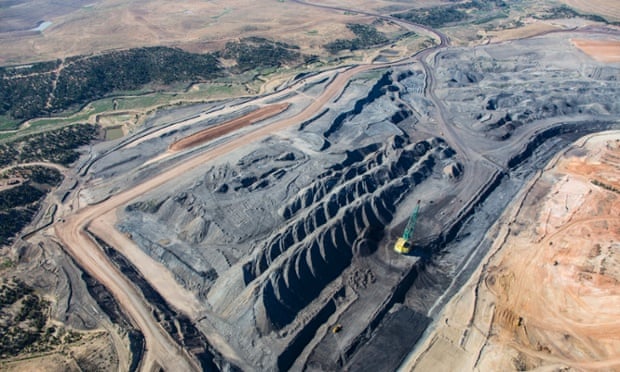
Leslie Macmillan in Black Mesa, Arizona
In 1967 the Peabody coal company came to the Navajo and Hopi reservations in northern Arizona and Utah to excavate a strip mine – but the land it leased from the tribes was on an ancient tribal burial ground. So, as required by law, it hired archeologists and for the next 17 years a dig known as the Black Mesa archeological project – the largest in North American history – unearthed more than one million artefacts, including the remains of 200 Native Americans.
Now the bones and artefacts are at the centre of a debate between tribes people who say ancestral remains and archeological ruins have been desecrated, and a coal company and government officials who are planning a new dig.
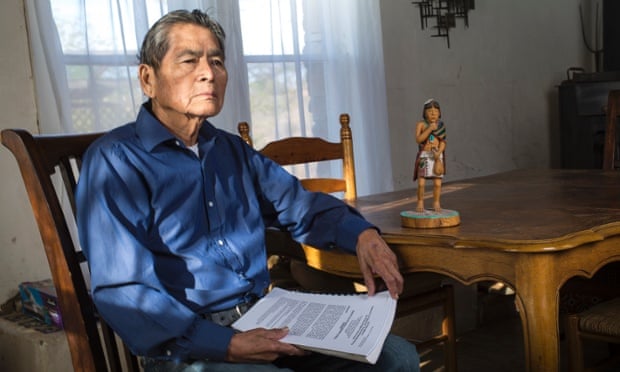
Native American groups and the Sierra Club are suing the US government to protect ancient Indian burial sites as one of the world’s biggest coal companies, Peabody, seeks a lifetime mining permit for the land it leases from the tribes. Sierra has settled its suit, while the other two suits are still active.
“I am incensed that my ancestors were dug up, ground up and send off to universities to be studied,” said Vernon Masayesva, a plaintiff and former Hopi tribal chairman.
Peabody says it has taken good care of the artefacts and bones. The collection is curated “with the express wishes of both tribes” and “in compliance with federal law,” said Beth Sutton, a company spokesperson.
But a report by the Army Corps of Engineers, which surveyed the collection early last decade at the University of Illinois, where it is housed, found the curation to be “substandard in every respect”. Rodents and spiders “were a problem”, according to the report, which notes that facilities had been broken into and artefacts were missing.
What’s more, Alan Downer, a former historical preservation officer for the Navajo Nation, said the tribe had never authorised any remains to be loaned to a professor, Debra L Martin, who teaches at the University of Nevada at Las Vegas. He said he was “shocked to find out” about eight years ago, that she had had the bones since 1980.
Some members of the tribes blame their leaders for moving too slowly, accusing them of being too concerned with retaining lucrative leases of the tribal lands.
Peabody’s Kayenta coal mine fuels the Navajo Generating Station, which is owned by the US Department of the Interior and provides water and electricity to Phoenix, Tucson, Las Vegas and Los Angeles.
The Black Mesa bones represent a fraction of the remains of 200,000 Native Americans owned by the US government, which sit in museums and universities as a legacy of industrial land use and archaeological projects.
“It’s ghoulish,” said D Bambi Kraus, president of the National Association of Tribal Historic Preservation Officers and an adviser to Bill Clinton, the former US president, on race Cataloguing the vast federal holdings of Indian remains is not a government priority, said Michael Trimble, an archaeologist with the Army Corps of Engineers, who authored the report on the Black Mesa collection.
The dispute is about more than bones and relics. For many Native Americans, the shabby treatment of ancestral remains amplifies a deeper sense of loss and dislocation that is tied up with the federal push of Indians on to reservations in the late 1800s.
On top of Black Mesa – so named because of a dark seam of coal that runs through it like a vein – Leland Grass, a traditional medicine man, surveyed the valley where sheep herders eke out a meagre living. More than 40% of homes here lack running water and the population is racked by poverty, joblessness and alcoholism – problems some attribute to the situation with the bones. “This desecration has brought a strong disharmony to the land,” said Grass, who, along with the rest of his medicine men’s association, called Nahooka Diné, is pushing for the bones to be returned.
The 1990 federal Native American Graves Protection and Repatriation Act (Nagpra) was supposed to accelerate such returns. “The law was supposed to right a moral wrong,” said Kraus. It requires any facility holding Native American remains to catalogue them and return them to the relevant tribes. But “compliance has been very poor,” according to a 2010 audit by the government accountability office.
Under the law, the Bureau of Indian Affairs should provide regulatory oversight. But Anna Pardo, who co-ordinates Nagpra for the bureau said: “We’re still not sure of the scope of our responsibility,” adding that the bureau requested a legal opinion from federal lawyers eight years after the law was enacted – in 1990 – and never received an answer.
The bones provide important clues to an agricultural people who first appeared among the Mesas more than 3,000 years ago.
“The bones are a byproduct of mining,” said Nicole Horseherder, an activist with the Navajo grassroots group Tó Nizhoni Ani. “They should have come up with a plan to rebury them… Instead, they created a situation they don’t know how to fix.”
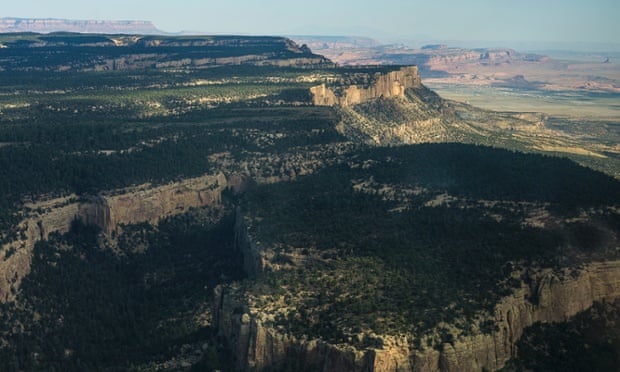
Peabody and a collective of museum curators, professors and tribal officials say they are trying to work through those issues.
Leigh Kuwanwisiwma, who manages cultural resources for the Hopi tribe, said: “There’s been a lot of goodwill from Peabody to fund a museum that would bring part of the collection from Illinois to the south-west.”
Mining officials acknowledge that there have been problems since the 1967 dig began and say the antiquities laws, newly enacted at the time, were confusing. “The federal agencies were winging it back then,” said Jon Czaplicki, an archaeologist with the Bureau of Reclamation.
Kelley Hays-Gilpin, an anthropologist at the University of Northern Arizona who participated in the dig said in a written statement that on one Peabody dig she saw human bones being ground up by mining machinery and ancient ruins excavated with a backhoe (the rear digging bucket on a JCB).
“The next dig deserves to be done professionally with full participation by members of clans who settled on Black Mesa,” said Masayevsa. The archaeological burial sites and rock art “represent pages from our history, Arizona’s history, US history and world history,” he said.
An excavation conducted painstakingly with hand tools will add time and money to the project. Still, officials with the Bureau of Reclamation have begun hearings on how to protect existing burial sites before the coal company expands its mine in an operating permit expected to come into effect in 2019. What to do with the remains is not a part of those discussions.
Read the entire article here: http://www.theguardian.com/environment/2014/dec/10/black-mesa-mines-native-americans-demand-ancestral-bones-navajo
Comments on the recent article in The Guardian
As a concerned traditional Hopi, Director of Black Mesa Trust, and former Chairman of the Hopi Tribe, I am grateful to The Guardian and Leslie MacMillan (Black Mesa Mines: Native Americans demand return of their ancestor’s bone. December 10, 2014) for drawing attention to Peabody Coal Co’s strip mining of our ancestral lands and their desecration of Hopi sacred sites and artifacts including ancient village and burial sites. The gigantic equipment they employ in the strip mining of our lands is indiscriminant when it comes to sensitive areas of importance to Hopi people, history and memory and is definitely not in keeping with sound archeological practice.
I do, however, need to correct the article’s assertion that Professor Hayes-Gilpin was an actual witness to the destruction of human remains. While reputable individuals known to me have reported such violations, Prof. Hayes-Gilpin’s statement (submitted to an Environmental Impact Study [EIS] regarding Black Mesa) said only that Peabody Western Coal Co., one of over a dozen subsidiaries of Peabody Energy Corp. had in all likelihood destroyed archeologically significant material and that it failed to meet requisite archeological standards—standards I believe are required by National Historic Preservation Act on lease and contract agreements.
U.S. Surface Mining and Reclamation Act, including its implementing regulations, U.S. Constitution and numerous United Nations declarations on human rights and Protection of Sacred areas.
As the article makes clear, however, there has been great damage to our land, to ancestors, artifacts, villages and other sacred sites buried in what our Elders call The Living Museum of the Hopi Sinom (people). Moreover, it is clear that such violations will continue if Peabody is permitted to expand and continue its mining as it has requested.
Vernon Masayesva
Executive Director, Black Mesa Trust
Black Mesa Trust Executive Director Vernon Masayesva Guest keynote speaker and presenter for the environmental awards at the 22nd Annual Region 9 Tribal EPA Conference October 15th-17th, 2014 Sacramento California.
For more information and to download the agenda visit:
http://region9tribal-epaconference.com/
Dark Days on Black Mesa
an editorial by Executive Director, Vernon Masayesva
“The Hopi people want one of the largest coal mines in North America to stop using their groundwater. If springs dry up. The ancient cultures may disappear.”
~ John Dougherty, New York Times, May 8, 1997
“Water under the ground has much to do with rain clouds. Everything depends upon the proper balance being maintained. The water under the ground acts like a magnet attracting rain from the clouds, and the rain in the clouds also acts as a magnet raising the water table under the ground to the roots of our crops and plants. Drawing huge amounts of water from beneath Black Mesa in connection with the strip-mining will destroy the harmony, throw everything we have strived to maintain out of kilter. Should this happen, our lands will shake like the Hopi rattle; land will sink, land will dry up. Rains will be barred by unseen forces because we Hopis have failed to protect the land given us, as we were instructed. Plants will not grow, our corn will not yield and animals will die. When corn will not grow, we will dies, not only Hopis, but all will disintegrate to nothing.”
Hopi elders and religious leaders
Unlike Peabody Western Coal Company, Hopi people do not have millions of dollars to pay for studies and hire scientists to deny the obvious. Hopi people have only eyes to see, minds to remember, and brains to reason. We must rely on one another, on public outcry of the American people, our own indigenous culture and the trust responsibility of the U. S. Government to protect our home land, our life-ways, and our natural and cultural resources.
The U. S. Office of Surface Mining Reclamation and Enforcement is the sole regulatory authority of Peabody coal mining on Black Mesa. In a direct conflict of interest, it uses Peabody studies, and crunches Peabody’s data to conclude that the Company’s mining of pristine fossil water from aquifers under Black Mesa is causing no “significance material damage.” They echo the company’s argument that the world’s largest strip-mining company will take “only one cup from a vast ocean of water.” Indigenous people have heard such claims before, but certainly European-Americans can remember when the nuclear power industry insisted that their electricity would be “too cheap to meter.”
Hopi elders remember watering their corn fields and swimming in Moencopi Wash; today it is dry. Reason and observation, the root of all science, ours and theirs inform us that this damage is done by over 160 impoundment dams constructed by Peabody and authorized by U.S Army Corp of Engineers.
Billions of gallons of pristine drinking water that parched lands without impacting the source of waters upon which we have survived for millennia, upon which we depend today –- water now fouled beyond reclamation. Billions of gallons of living water, enough to provide the entire population of 10,000 Hopi people for 300 years, dies each year to send coal slurry to Los Angeles cheaply. In Hopi, Moencopi means “where water flows”and now Moenkopi Wash, the source of our fields and wetlands since ancient times is dry.
Observation and reason show us that an enclosed aquifer in a land where less than ten inches of rain is a good year, cannot sustain the extraction of one billion gallons pumped annually to send pulverized coal to the Mohave Generating Station in a Nevada desert. Yet, year after year, that was the case before BMT and a coalition of environmental groups shut it down in 2006. By the time slurry was shut down, over 45 billion gallons of sole source drinking water was gone.
How much clearer, how much simpler could it be?
An untold number of archaeological and burial sites have been destroyed: over 100 human remains (only 10 % site is required to be saved) of our ancestors have been dug up and shipped to distant universities to be studied without the knowledge and/or approval of Hopi people. Black Mesa is considered to be “archaeological rich” territory by archaeologists, and more than 2500 pre-historic sites have been located and mapped on Peabody’s massive land lease area. Black Mesa is therefore a cemetery and should never have been allowed to be stripped-mined.
Peabody continues to mine and supply coal to another mammoth 2,250 MW Navajo Generating Station located on Navajo Reservation, in Page, Arizona. Even without coal slurry, Peabody still continues using 1,250 acre feet of water a year. This is equivalent to the amount of domestic and municipal water used on all Hopi land. Peabody has filed a revised mine application with Office of Surface Mining to allow them to continue mining until 2044. If that application is approved by the U.S. Secretary of Interior, an additional 20 billion gallons of sole-source drinking water will be gone.
Black Mesa Trust, a non-profit organization, set up by Hopi elders in 1989 to save our sacred waters by ending strip-mining permanently. We appeal to you to help save an ancient living civilization.
Contact: Vernon Masayesva, Founder and Director of Black Mesa Trust, for information and how you can help.
Black Mesa Trust is a federal non-profit organization.
E-Mail: kuuyi@aol.com Visit: www.blackmesatrust.org
BREAKING NEWS!
Vernon Masayesva: Coal-fired power plant
harms Hopi people

Navajo Generating Station from the south. Photo by Wolfgang Moroder. Licensed under CC BY-SA 3.0 via Wikimedia Commons.Vernon Masayesva, the founder of the Black Mesa Trust and a member of the Hopi Tribe, questions a settlement that allows a coal-fired power plant to keep operating:
The decision by President Obama to delay carbon standard for reservations plants (Daily Sun, June 2014) will benefit owners of Navajo Generating Station to the detriment of Hopi people who want to shut down the NGS as a coal-fired station. The U.S. Bureau of Reclamation, Navajo Tribe, and Gila River Indian Community along with Salt River Project, Arizona Public Service and Tucson electric have reached an agreement to shut one NGS unit down and to operate two remaining units up to 2044 using coal from Black Mesa on the Hopi and Navajo reservations, and water for Lake Powell. The U.S. Environmental Protection Agency calls the settlement “creative.” Shutting one unit down will meet EPA’s objective of reducing nitrogen oxide to a certain level. NGS is central to water delivery to Arizona Indian tribes who have settled their water claims with the federal government.
Get the Story:
Vernon Masayesva: Keep NGS on strict timeline (The Arizona Daily Sun 7/13) Federal Register Notice:
Notice of Intent To Prepare an Environmental Impact Statement and Notice of Public Scoping Meetings for the Navajo Generating Station-Kayenta Mine Complex Project, Arizona (May 16, 2014) Related Stories:
EPA to consult tribes about emissions at coal-fired power plants (6/4)
END PEABODY MINING-HELP SAVE OUR WATER and SACRED SITES
July 2014
We are appealing to you to help save our sacred waters, religious shrines and cultural resources. Please mail your federal tax deductible donation to Black Mesa Trust, P.O. Box 33, Kykotsmovi, AZ 86039, today.
COAL MINING ON BLACK MESA:
- Over 60 billion gallons of pristine fossil water stored deep under Black Mesa will be pumped from 1970 to the end of 2044 to operate coal strip mining by Peabody Western coal Co., if it is granted approval by U.S. Secretary of U.S. Department of Interior
This amount of water could fill 945,560,000 55-gallon barrels. Assuming each barrel is 4 feet it will reach the moon over three (3) times!!! This amount of water is enough to sustain the entire Hopi population of 10,000 for over 300 years at the present rate of use
- Over 2,500 historic and pre-historic archaeological and burial sites were mapped by Peabody on their land lease area. Untold number of sites, including rock art, has been destroyed. Over 100 remains of Hopi ancestors crated and taken to distant universities to be studied.
- Respiratory problems among Navajos living down-wind from blasting areas has increased dramatically.
Siipa’puni
Planning is underway by non-Indian partners to construct Grand Canyon Escalante Resort at the confluence of Little Colorado River, outside of Grand Canyon National Park boundary on the Navajo Reservation. Visit: http://www.grandcanyoescalade.com Type: Siipapuni
“Grand Canyon Escalade, as it’s been named, would span 420 acres near the confluence, just east of Grand Canyon National Park. Its centerpiece would be the “Escalade” Gondola Tramway, carrying tourists from the Grand Canyon’s South Rim to the canyon floor. Once there, visitors could walk along a 1,400-foot elevated riverwalk to the confluence, eat at a restaurant, or visit an amphitheater and terraced grass seating area overlooking the Colorado River.” [Anne Minard, Four Corners Free Press, June 1, 2013]
Siipa’puni is one the holiest places on earth and is therefore worthy of protection. means umbilical cord in the Hopi language. Hopi people refer to it as the Place of Emergence from the Third to the Fourth World. It is their Mecca, Vatican, and their Jerusalem. It was here that the prophesized 5th World will be formed.
The project is opposed by Black Mesa Trust, Hopi Tribal Council, Zuni Tribe, and coalition of Navajo landowners and grazing permit holders who reside near the “confluence.”
Write: SAY NO TO MINING AND ESCALADE!
U.S. Secretary of Interior
U.S. Department of the Interior
1849 C Street, N.W.
Washington, D.C. 20240
For more information visit: www.blackmesatrust.org
E-mail: Vernon Masayesva, Black Mesa Trust Executive Director at kuuyi@aol.com
July10, 2014
An open letter to Secretary Sally Jewell, U.S. Department of the Interior
Dear Secretary Jewell,
My comments, criticism and complaints expressed in this letter does not necessarily reflect the formal positon of Black Mesa Trust Board of Directors.
I founded BMT in 1998 after serving as Chairman of the Hopi Tribe from 1990 to 1994. I am currently the Director.
The Navajo Generating Station – Kayenta Mine Complex Environmental Impact Study (EIS) process is seriously flawed and must be suspended indefinitely for the following reasons.
The 30-day deadline to study and comment on Peabody Western Coal Co. (PWCC) revised Permanent Program Application does not meet the minimum standard set up under the National Environmental Protection Act, Surface Mining Control Reclamation Act and the implementing regulations.
The 30-day comment period is therefore premature, arbitrary and capricious and has no basis in law. Hopi Tribal Council, as of today, was not given the opportunity to understand the mine plan and very few people showed up at the U.S Bureau of Reclamation sponsored Open House at Hopi Day School. A BMT Trustee said no one was there when he came around 5:30 p.m. The Open House was advertised to be open from 1: p.m. to 7:00 p.m.
The Office of Surface Mining (OSM) has not provided Hopi and Navajo language interpreters making it impossible for local people, who will be impacted directly by mining activities for many years, to understand the complex technical plan. Workshop on mine plan and EIS process should have been held throughout Hopi village with Hopi language interpreters to explain the complex technical mine plan. Without this, how can local people make informed comments?
Failure to properly educate and inform the people is a direct violation of their due process rights as well as a violation of NEPA and Presidential Executive Order.
Second: In the present case Peabody Energy Company, not PWCC, is the True Applicant. Congress did not intend “true applicants” to hide behind corporate veil that do not reflect the true operational nature of their enterprises. OSM must use its authority to pierce the corporate veil. PWCC is a subsidiary, just one leg of a centipede.
Unless OSM fully discharges it regulatory authority it cannot legally declare PWCC’s revised Kayenta mine applications “administratively complete.”
We filed this comment with OSM in 2002 along with numerous concerns and comments. To this day OSM has refused to respond on our comments, therefore, Black Mesa Trust will be re-submitting the comments. Our comments compiled by a term of lawyers is available from OSM Denver office. It is too voluminous and expensive for BMT to copy.
In addition, BMT is awaiting a trial date for DOI Administrative Law Judge to set a hearing date on our complaint that PWCC and OSM is conducting a “piece-mealing” process to avoid failure to complete an analysis of Cumulative Hydrologic Impact Analysis of groundwater drafting beginning 1970 to the present.
Former DOI Secretary Manual Lujan in a letter to me, when I was Chairman of the Hopi Tribe, said he will delay issuing LOM Black Mesa Mine permit to PWCC until the study is completed. Over 20 years later the study has not been completed and consequently the BMM LOM is still on Administrative Delay. All mining operations on BMM ended in 2006. (copy of letter enclosed)
Since SMCRA was enacted OSM has refused to require PWCC to post groundwater reclamation plan and bond because according one OSM official the agency has “irrefutable facts” to prove that the impact on our sole source drinking water will be insignificant. This type of grandiose statements is a policy decision that violates SMCRA.
As you are well aware the Hopi Tribe was deliberately left out of drafting the agreement put together by the Federal Technical Work Group. This omission is a blatant violation of Hopi sovereignty and the Hopi Chairman has threatened to take the issue to federal court. I believe you have a copy of the letter from former Chairman Leroy Singoitewa.
I personally do not feel that U.S. Bureau of Reclamation should be the Lead Agency because of its conflicted position and because BOR has, by signing TWG Agreement, supported the extension of NGS to 2044 before an EIS is done to study all reasonable alternatives and because it is based on assumption that the Hopi Tribe will extend Peabody Coal lease. Our Tribal Council is required by the Hopi Constitution to consult with 12 Hopi independent villages before it makes a decision. The process of consultation has not started and could become a lengthy and contentious process. Complicating the matter is the fact that only 5 out of 12 villages are represented on the Tribal Council.
All agencies of the federal government have a fiduciary responsibility of the highest order to protect our tribal resources. I am not convinced that DOI and BIA in particular, is committed to carrying out their duty to the Hopi people. On the contrary, I have reason to believe that OSM treats Peabody like a special customer while BIA looks the other way.
Black Mesa Trust has prepared a “win-win” resolution to keep NGS operating up to 2044 and perhaps beyond. It could well serve as a model for 4Corners Generating Station, which is facing similar problems as NGS. The conceptual plan called Crossroad, is only a conceptual plan. It lacks technical plan and details because BMT does not have funds to hire experts. The plan will be presented when NGS – KMC EIS scoping process begins. A copy of the plan including Western Science v Native Science is enclosed.
Vernon Masayesva
Recent Fourth Phase Water Discoveries Alter Basic Understanding of Water and Life.
Gerald Pollack, PhD, is a Professor of Bioengineering at the University of Washington announces new research on water in his latest book – The Fourth Phase of Water.
Recent research findings regarding Fourth Phase Water are altering the understanding of life, health, the atmosphere, and how water affects human bodies.
“Fourth Phase Water,” is a newly confirmed phase in addition to water’s solid, liquid and vapor phases. Fourth Phase Water is midway between ice and liquid. There is organized molecular structure as in ice but the water remains warm and semi-liquid. As water solidifies into ice, it passes through an “Exclusion Zone” of Fourth Phase Water in which certain substances are squeezed out and the water is purified.
Fourth Phase Water, says Pollack, behaves very differently than other water phases and far more research is needed. Most of the water in body cells, and much of the water vapor in the atmosphere, Pollack believes, consists of Fourth Phase Water.
Fourth Phase Water, according Pollack, is built by light and occurs when water is in close contact with a solid surface. Fourth Phase Water has a negative ionic charge whereas other water phases have a positive ionic charge. That suggests a potential energy source in the interface between liquid and Fourth Phase Water, says Pollack, and drinking the two phases together could be highly beneficial.
Pollack believes that Fourth Phase water has the ability to pick up extremely subtle bits of external information, and to remember them by slightly altering its structure. “Our thoughts,” says Pollack, “radiate infrared or electromagnetic energy from the body that can be detected and remembered by nearby water”.
Pollack and Kleyne agree that knowing what sort of input the water inside the body, water that comes into contact with the body, has received can be critical to health
To support the theory that water has the ability to remember and transmit information, Pollack cites the work of Fereydoon Batmanhelidj, Masaro Emoto and Luc Montagnier.
http://www.prweb.com/releases/2014/07/prweb12011639.htm
http://censored-news.blogspot.com/2011/04/hopi-and-japanese-water-has.html
An open letter from: Black Mesa Trust Founder, Vernon Masayesva
to: Sharon B. Megdal, Director of The University of Arizona
Water Resources Research Center
January 29, 2014
Dear Ms. Megdal,
This evening, I received an e-mail of a letter sent to you from Ed Becenti, Milton Bluehouse (former President of the Navajo Nation) and others and also your response to their letter. My question to you is who selected Stanley Pollack and why? Is there a criteria set up that you or your “committee” uses to select “distinguished speakers”? At a public meeting held by the Hopi Tribal Council at the village of Hotevilla, only one of the 12 independent villages supported the Kyle Bill.
Many reasons expressed by the audience were based on Hopi religious philosophies and the covenant to help Masau, Guardian of Earth Mother, to keep all living things alive by nursing them with her water.
Hopi believe very adamantly and passionately that water is life, a spirit that lives within us and who travels to the cosmic sea after our journey on earth ends to join with the ancestors, the Cloud People. There they rest and return to earth as rain, snow and mist to nurture life.
This belief is based on the fact that water is a living element that is indestructible. Water, they say, has many faces in the form of liquid, solid and vapor. It also has memory. When drops of rain fall on us children are taught to say “Thank you for visiting us, thank you for remembering us”.
The Anglo system of law is based on “property rights”. Hopi people, therefore are convinced they will lose if they start fighting for water based on a system that is played out on the field dictated by the Western concept of property.
Our Hopi say “you can no more own water, anymore than the air we breathe. We all have a right to use it wisely and respectfully, but we can never own water as private property.”
The University of Arizona has the right to invite whomever they want to speak on topics, but in this particular instance, inviting Stanley Pollack to speak on why Little Colorado River Settlement failed is an insult to myself and many others who believe he is playing a corporate game. He has no credibility with many Hopi and Dine people, especially myself who have spent the last 20 years doing what we can to save water for future generations yet to come. In my view, Mr. Pollack is using this forum to serve his own personal agenda, one being to save his credibility with former Senator Jon Kyle, who he let down, but is now blaming it on Hopi and Dine people.
The Department of Interior, is the largest single owner and buyer of Peabody coal. The other investors, including public and private utility investors want to seduce us by saying they will help our communities by transitioning away from a coal-based economy to renewable energy. More empty promises. Their only concern is to profit and recover their capital cost of building NGS and mining operations.
I respectfully suggest that U of A students organize a forum where grassroots Hopi and Dine people will tell their story about a huge “coal-spill” going on in Black Mesa, just as devastating as an “oil-spill” in the Gulf of Mexico, which drew international outrage. The coal spill is not as dramatic because it is happening in slow motion, over time since 1970 and is now expected to continue to 2044, also because we as “Indians” are still to this day considered wards of the U. S. Government, and we don’t vote.
We have no knowledge of the full nature and extent of damages done to our sacred water, archaeology and burial site which dots the entire Black Mesa region Hopi calls Kawestima. Over 2500 archeological site were mapped by a field school on Peabody’s massive leasehold. How many, including burial sites, were deliberately destroyed, this we do not know. Destroying sites is akin to tearing pages from our common history book. It is, as one elder put it, “erasing our footprints.”
Only a Congressional oversight on Black Mesa mining will finally reveal the devastating impact of the largest strip-mining and flagrant violation of federal laws intended to safeguard our land. Not a lecture that tells us why it is good for us, why it is in our best interest. We are all tired of being spoken to as someone who does not have a mind of their own as step children who are spoken down to. We should have all learned by now that this type of tactic died in the 60’s and never worked. What we want is a dialogue, where all opinions will be heard and not because it is profiting some faceless corporate profiteers, whose only interest is protecting their huge investments at our expense.
There are always two sides on an issue. When is the University of Arizona going to give us the opportunity to tell our side of the story on the failed LCR settlement? Unfair as I may say, University of Arizona has its head buried in academic sand.
I apologize for my blunt statement and probably unfairness, but I feel its time we, the oppressed people, speak out loud and clear with passion. Our land is our culture, our history and our future. We respect the earth and we are not separate from her.
You have my permission to share this with open letter with others.
With all Sincerity and Respect,
Vernon Masayesva
Founder/Director, Black Mesa Trust
Former Chairman, Hopi Tribe
CROSSROAD
A FRAMEWORK TO TRANSITION NAVAJO GENERATING STATION TOWARDS A CLEANER ENERGY GENERATING STATION BY 2025
PREPARED IN BEHALF OF BLACK MESA TRUST WITH CONTRIBUTIONS FROM INDIVIDUALS AND DINE GRASSROOTS ORGANIZATIONS
by Vernon Masayesva Founder and Director, Black Mesa Trust, Former Chairman, The Hopi Tribe
July 30, 2013
NAVAJO GENERATING STATION POSITION PAPER
BLACK MESA TRUST:
For more than a decade, Black Mesa Trust (BMT) has worked to empower Hopi and Diné peoples to safeguard, preserve and honor the land and waters on Black Mesa, upon which the security of generations depend, i.e., to create a permanent safe homeland.
BMT helped play a key role in ending coal slurry operations in 2005, and the attempt to bring ground water from Coconino Aquifer under Navajo land to continue the coal slurry operation.
NAVAJO GENERATING STATION (NGS):
NGS is a three-unit, 2,250 MW-rated, coal-fired thermal electric generating station located on the Navajo Reservation in northern Arizona, near Page, on the edge of Lake Powell. NGS is one of the nation’s dirtiest power operating station. It spews 16 million tons of green house gases and particulates throughout the Colorado Plateau, causing environmental and health damages and clouding visibility at Grand Canyon National Park and other neighboring parks.
NGS is operated and managed by Salt River Project Agricultural Improvement and Power District (SRP), a non-profit public utility company under the State of Arizona. It is the second largest owner, next to U.S. Department of the Interior (DOI).
Designed in conjunction with the original federal and states plans to populate post-war southwestern areas of the U.S., it provides reliable low cost electricity to meet the growing demand of residents, businesses and industries in Central/Southern Arizona, Southern California, Nevada, and to Central Arizona Project (CAP). Central Arizona Water Conservation District (CAWCD), another entity under the state of Arizona, relies on U.S. Bureau of Reclamation’s (BOR) 24.3% ownership of NGS to provide power to operate CAP. CAP is owned solely by the federal government. BOR uses CAP to guarantee water delivery to Arizona Indian Tribes who agreed to be a party to the 2004 Arizona Water Settlement Act in return for waiving their aboriginal Winters Doctrine rights to waters. Navajo Nation is a party to the settlement.
For 40 years NGS owners and Peabody Western Coal Company (Peabody) have exploited coal and water on Hopi and Navajo lands to insure profit-rich corporations low cost base-load power.
Water supply from the Navajo Aquifer was approved by DOI Secretary Stewart Udall at a rate of $1.67 per acre foot (AFY) for ground water and $7.00 AFY for Lake Powell water: a 50-year promise from Navajo not to pursue its claim to 50,000 AFY of water from Upper Colorado River; and a grossly unfair site infrastructure leases. NGS site lease with Navajo, and Peabody’s leases with both Navajo and Hopi Tribe (Hopi) were quickly approved by Udall, who abandoned his trust responsibility in order to expedite the leases and construction of NGS before National Environmental Protection Act (NEPA) became law in 1970.
Records from a hearing conducted by Senator Wayne Aspinall (Colorado) put a spotlight on Udall’s motive to open up tribal lands to utility and mining companies, using Congressional appropriation.
Udall testified that the intent of the legislation was to “move (Hopi and Navajo) down the road toward the right kind of ultimate independence…”
Aspinall asked: “By ultimate independence do you mean doing away with reservations as such?” To which, Udall responded: “I think this is undoubtedly the end result.”
The financial and resource benefits created at the expense of Hopi and Navajo through questionable federal manipulations is today very much in question regarding the future of NGS and Peabody. Both are facing multiple complex problems, among them are:
- The Environmental Protection Agency (EPA) requiring NGS owners to reduce nitrogen oxide required under Clean Air Act. According to SRP, EPA’s preferred decision to retrofit the three units with Selective Catalytic Reduction (SCR) as the best technology could cost $1 billion dollars or more. SRP officials are threatening to shut down NGS if EPA selects SCR;
- EPA rule-making is underway to reduce mercury emissions, thereafter Carbon Dioxide;
- Los Angeles Department of Power and Water is bound by California law to divest itself from NGS. Nevada Energy (NV) is planning to follow suit;
- Potential conflict of interest issues continue to be a major problem for BOR. This is certain to be the subject of close scrutiny. BOR has trust duty to protect tribal natural resources, yet it enjoys a majority share of NGS, 100% ownership of CAP. As owners of NGS, BOR is buyer of Black Mesa coal. It is a member of NGS Engineering and Operation Committee and enjoys voting powers. BOR is not in a position to carry out its mission and trust responsibility to protect tribal natural resources;
- Peabody coal leases with Hopi and Navajo ends in 2025. New leases are needed to extend mining up to 2044. Without the extension Peabody cannot guarantee coal to NGS for 25 years;
Unlike Navajo, the Hopi government operates under a Hopi Constitution. Under the law control over natural resources rests with 12 independent villages, not the Hopi council and Chairman. Only 5 villages are represented on Council. This situation makes mining extension problematic.
Currently mining is on Kayenta Mine West located exclusively on Navajo Reservation, and Kayenta Mine South on Former Joint-Use area set up by Congress to settle the land dispute. FJUA was eventually divided into Hopi Partitioned Land (HPL) and Navajo Partitioned Land NPL. However all minerals including water was not divided. As a result everything under HPL and NPL belongs to Hopi and Navajo jointly and equally. This means both tribes have to approve the lease extension.
- A growing Hopi and Diné opposition to the world’s largest strip-mining operation;
A Citizens Complaint and possible lawsuit against Secretary of Interior for failing to order U.S. Office of Surface Mining Reclamation and Enforcement (OSMRE) to strictly enforce NEPA and U.S. Surface Mining Control Reclamation Act (SMCRA). To this day, OSM has declined to require Peabody to post groundwater reclamation plan and bond;
- BMT and other non-governmental organizations (NGOs) filed a challenge to OSMRE’S decision to grant Peabody permission to continue mining on Kayenta Mine for another 5 years beginning 2010. The Petition is under consideration by federal administrative law judge. The 5-year permit ends 2015;
- Before the Secretary approves the lease extension the Environmental Impact Study has to be completed. Given the multiple problems facing NGS and Peabody the EIS process will be highly politicized and publicized. Whatever the decision it is likely to be challenged in federal court;
The stakes could not be higher for the millions of families, businesses and regional economies which depend upon energy from NGS and water from CAP. Stakeholders are unsure about what course to pursue except to ask Congress to intervene to save NGS, regardless of what Hopi and Navajo people say. If this happens it will undermine tribal sovereignty for all tribes in the United States.
Royalties and other payments received from NGS and Peabody operations are important revenue sources for tribal operations and services. Mine and NGS workers (nearly 1,000, mostly Navajo) depend upon the wages they earn to support their families. Towns and county governments are very concerned about the loss of tax and business revenues derived from NGS, Peabody and their employees.
What is certain is the eleventh hour for decision-making. The eleventh hour for critical actions has arrived. We are standing at a crossroad.
TRANSITION TO CLEAN AND CLEANER ENERGY OR NOT:
The first path would continue coal-fired generation by extending leases and service contracts to 2044. It would increase tribal revenues significantly and save jobs. This is the path proposed by NGS and Peabody and is under consideration by Hopi and Navajo legislators, but is vehemently opposed by the grassroots peoples, and non-governmental organizations (NGOs), as it would continue strip-mining.
The second path, one favored by some NGOs, calls for the closure of NGS and all related mine operations and the development of a 8,445 MW solar farm on 13.2 square miles of tribal land.
The proposal envisions a 6-year construction schedule, equity stakes for Hopi and Navajo, and the creation of 16,900 construction jobs, 5,380 manufacturing jobs, and 1,600 operational jobs expanding to 8,000 jobs by 2020.
Others support development of a solar generating station as a stand-alone project to be constructed on “brown fields” or reclaimed land on Peabody lease area. Peabody currently has right to 67,000 acres of tribal lands. Most of the area is mined out.
BMT OPTION – A MITIGATIVE APPROACH:
BMT is convinced that an integrated phased plan to continue NGS as a base-load or near power station using a mixture of solar, hydro power and natural or methane gas is the best approach, and is in the stakeholder’s best interest. A win-win resolution.
To mitigate or minimize damages to the environment, cultural resources, health, and reduce global warming, Black Mesa Trust supports a path that calls for:
- Immediate decommissioning of one coal-fired generator unit by 2019. This will reduce greenhouse gas emission, coal mining and water use from Lake Powell by one-third (1/3);
- Replacing the decommissioned unit with a combined-cycle solar and natural gas unit sufficient to guarantee CAP operations at affordable costs;
- Gas could be imported from the Southern Ute Indian Tribe. The Tribe already has a natural gas production company. It is piped to a gas powered generating station in Kingman, Arizona. Use of Natural gas will serve as a bridge to the day when NGS could be powered solely by renewable energy. The gas pipeline passes through Hopi and Navajo, not far from NGS;
- Once the combined cycle unit becomes operational decommission the second unit and replace with a combined-cycled gas-solar energy or hydro-power by 2024;
- Congressional action to dedicate 500 Megawatts of hydro-power from federal water storage reservoirs on Upper Colorado River Basin states, thereby carrying out the intent of Congress when $80 million was appropriated to build NGS to power CAP;
ECONOMIC AND JOB OPPORTUNTIES:
- Develop 1000 MW commercial solar farms on Hopi and Navajo lands between Tuba City and Hopi Villages. The project will create 2,500 construction jobs;
- Construct a new 500 KV transmission line, alongside the existing Arizona Public Service 500 KV El Dorado Transmission Line that connects Four Corners Generating Station and Moencopi Substation near Cameron, Arizona. The new line will be dedicated to bring solar energy from the proposed solar fields to markets in Arizona, California, and Nevada. This will create more jobs; and
- Convert the 100-acre Hopi Winslow Industrial facility into a solar equipment manufacturing and /or storage facility. The building has been vacant for over 20 years and is owned by the Hopi Tribe. This will create significant economic boost for the tiny community of Winslow, and create jobs;
- BMT propose that a Colorado Plateau Clean Energy Initiative (CPCEI) be set up to serve as a research/development arm of Hopi and Navajo;
We envision it as a collaborative effort with state universities whose mission will be to investigate various ways energy can be developed using tribal natural resources.
It will also serve as a valuable training program for youth to prepare them to take over management of our resources.
TRANSITION AND BUSINESS PLAN:
A transition and comprehensive business plan are key elements in accomplishing our objective. Both require a team of technical, legal, finance, and marketing experts supported with multiple year funding. BMT is convinced that if both Hopi and Navajo legislators grant conditional support to move forward we can get seed money from Navajo and Coconino County Board of Supervisors, and Southern California Edison (SCE). SCE has set aside money from the sale of sulfur dioxide credit for Hopi and Navajo to develop renewable energy projects on tribal lands.
With conditional support from Hopi and Navajo legislators, it is possible to secure long-range funding from DOI, DOE, EPA, state of Arizona, owners of NGS, Central Arizona Water Conservation District (CAWCD), and non-profit foundations.
A MODEL OF TRANSPARENCY AND PARTNERSHIP:
If the plan proposed herein is successful, it will be a model of partnership between energy resource tribes and energy producers and distributors.
It can be used as a model to continue operation of Four Corners Generating Station far into the future without using coal.
It will be a showcase of how Indian Tribes are participating in reducing global warming and conducting energy development in a responsible way. In their way
June 2013
To Supporters and Friends of Black Mesa Trust:
Our goal: The mission of Black Mesa Trust (BMT) is to safeguard, preserve and honor the land and waters of Black Mesa.
We are writing for the following the reasons: first, regarding the enclosed letter to the public from a Hopi. The anonymous donor gave $40,000 with the condition that Hopi & friends match it.
The donor believed in work that BMT is doing in behalf of the Hopi people. Because of BMT’s work, the Peabody coal slurry operation is permanently shut down…. Our water saved for many future generations.
BMT continues to work on educating and empowering the people, especially the youth. Please give what you can to match $40,000 to support their work.
Black Mesa Trust
P.O. Box 33
Kykotsmovi, AZ 86039
(928) 734-2191
“A CALL FOR ACTION”
Black Mesa Trust (BMT), a non-profit Hopi environmental educational and advocacy organization, founded in 1998, by Hopi elders and youth, have launched two major campaigns.
First, is to end the world’s largest and destructive coal strip-mining operation in the heart of Hopi and Diné (Navajo) homelands, called Black Mesa, in northern Arizona.
Second, is to transition Navajo Generating Station (NGS), a 2250 megawatt thermal generating station away from coal to clean and cleaner energy, and to bring about economic justice to Hopi and Diné who have been subsidizing and continue to subsidize NGS and Central Arizona Project (CAP) that depend on cheap cost of electricity to run giant water pumps needed to deliver water from the Colorado River to Phoenix and Tucson over a distance of 320 miles.
Third, is to call upon children of all colors from the Four Corners of the earth to begin healing Mother Earth. A Concept Paper is in the works. We will take their messages to the United Nations. This is a dream of what I want to accomplish before I retire and it will be my last project. My hope is that others will take on the challenge when it stares you in the face. The Hopi have a belief: “if you see a child crying, wipe away the tears; if you see a person hungry, feed him; if you see a person suffering, comfort him.”
There are big projects that cannot get off the ground without generous support from the public, charitable organizations, and volunteers. Currently, BMT has limited funds. Please answer our “CALL FOR ACTION” by supporting all or one of the projects as a donor or volunteer. We need fund-raisers, organizing Friends of Hopi in your communities, and writing to Congress to conduct a hearing into the coal strip-mining operation, etc.
Together, we can make a huge difference.
Sincerely,
Vernon Masayesva
Executive Director, Black Mesa Trust
Founder and former Chairman of the Hopi Tribe
BLACK MESA TRUST
FOR IMMEDIATE RELEASE Feb 3rd, 2012
Black Mesa Trust Calls on EPA to Help Put Navajo Generating Station
on Sound Environmental Footing
Black Mesa Trust, an indigenous grassroots Hopi environmental, education and advocacy group serving the Native peoples of Black Mesa in northern Arizona, has called on Environmental Protection Agency Region 9 to support its efforts to require that the coal-based 2250-megawatt Navajo Generating Station in Page, Arizona, and the Central Arizona Project that carries water from the Colorado River to Phoenix and Tucson, operate in an environmentally sound and culturally equitable manner.
Black Mesa Trust Executive Director Vernon Masayesva said, “The good old days when NGS produced cheap electricity to pump water to Central and Southern Arizona, using coal from Black Mesa obtained at discounted prices from the Hopi and Navajo people, are numbered. Along with NGS, Peabody Coal is facing multiple problems, including growing opposition from Hopi and Navajo people to the world’s largest strip-mining operation
“We feel NGS can be saved as a base-load generating station, using a mix of solar, natural gas, and hydro-electricity.”
The coal, water and land leases that allow Navajo Generating Station to run are up for renewal in the next few years. As the leases are renegotiated, Black Mesa Trust has requested that Interior Secretary Ken Salazar consider these issues: the historic and long-term health, water and economic harms the Hopi and Navajo peoples have suffered from the generating station and the coal mines that fuel it; the Office of Surface Mining and Reclamation Enforcement actions that have allowed mining operations to contaminate and degrade surface and ground water in the region, diminish water flows from springs and washes to traditional Hopi farms and destroyed hundreds of ancient burial sites; and the development of a regional energy plan focused on developing clean energy resources to provide baseload power to operation the 336-mile Central Arizona Project, which since its inception has been totally reliant on power from the Navajo Generating Station.
Masayesva and Marshall Johnson, founder of To’Nizhoni Ani, a Navajo grassroots organization dealing with water issues, have enlisted experts from Black Mesa Trust’s Circle of Advisors, the Grand Canyon Trust and the Center for Applied Research to assist with the effort, and will seek support from the governors of Arizona, New Mexico and California, Hopi and Navajo government leaders and other environmental organizations to develop a plan to safeguard, honor and preserve the land, waters and cultures of Black Mesa.
A Few Environmentally Friendly Solutions to the Navajo and Hopi’s Water Crisis
Letters from 2004
http://articles.latimes.com/2004/jun/27/magazine/tm-letters26
Sean Patrick Reily’s article “Gathering Clouds” (June 6) is an excellent account of the Hopi and Navajo’s grass-roots struggle to save the Navajo aquifer. The importance of the aquifer to our cultural and spiritual life cannot be overstated.
I wish to add a few points: First, the struggle to protect our water from corporate exploitation is not over. Also, the possible closure of Southern California Edison’s Mohave Generating Station and the subsequent closure of Black Mesa mine do not necessarily mean an economic meltdown.
Black Mesa Trust has submitted a proposal to construct a 1,000-megawatt solar generating station on native land. The solar project will create more than 1,000 jobs and add $5 to $7 million annually to Hopi tribal revenues while providing much-needed “peaking power” for Southern Californians. The solar generation will require minimal water and is consistent with the Hopi belief that we can develop our resources and enjoy benefits of a modern society without degrading the environment and our culture.
The federal government is backing Peabody Western Coal Co.’s coal slurry project. Does this policy to manage our precious resources so irresponsibly signal an endorsement of slurry operations as part of our national energy policy, or is the government making an exception because it is Indian water that is being abused?
Vernon Masayesva
Executive Director
Black Mesa Trust
Kykotsmovi, Ariz.
*
Reily’s article was a careless and narrow portrayal of tribal and political activism told largely through the accounts of two people who misrepresent themselves as the voice of the Navajo Nation and the Hopi tribe. Overlooked is an exhaustive and years-long effort by the Navajo, the Hopi, Peabody Energy and Southern California Edison to find solutions that will keep the Mohave station generating with Black Mesa coal while developing a new water transportation source that the tribes support.
An environmentally friendly solution is found in the Coconino aquifer. Further developing this aquifer would preserve low-cost energy, jobs and tribal economies while creating a prime opportunity to bring a new source of water to the Navajo and Hopi. The Times views the looming shutdown of the Black Mesa mine and the Mohave Generating Station as a “victory” for activists by ending use of the Navajo aquifer, a resource that the tribes themselves chose to develop and market.
Fifty years of study by our nation’s experts with the U.S. Geological Survey, combined with oversight from other government agencies, continues to show that the Navajo aquifer is healthy and robust. Peabody is proud to use leading-edge, peer-reviewed science to protect and manage the resource.
It is inappropriate to suggest that there is victory in putting citizens and tribal people out of work, destroying essential tribal revenue, and turning out the lights on 1.5 million California families who are grappling with an energy crisis. Peabody is working hard to find common ground with all stakeholders and to avoid or minimize any shutdown of Mohave. If closure occurs, the tragedy is that tribal members will suffer most.
Vic Svec
Vice President
Public and Investor Relations
Peabody Energy
*
I am a geologist, and there is a far better approach that should satisfy all parties concerned: Build a second pipeline parallel to the present slurry line. Then separate water from coal at the delivery end and recycle treated water back to the point of origin again and again. Some water may be lost in recycling. Some may be processed for use by the Navajo people. The small increment of loss could be replenished from the Navajo aquifer. Costs for the second pipeline would be shared, excepting the Navajos, by the interested parties.
Carroll L. Hoyt
Hemet
*
I find it refreshing when people are reminded of the true costs of goods and services in our modern economy. Although Californians benefit from environmental regulations, sacrifices are often made in nearby countries, states and Indian reservations to sustain our quality of life.
I enjoyed Reily’s article, but this is certainly not a last stand for the Navajo. While drilling of the Navajo aquifer will cease in 2005, the Coconino aquifer is being advanced as the replacement source for Peabody’s slurry operations. Those who have fought to close the Navajo aquifer are organizing to prevent the Coconino aquifer from facing the same bleak future.
Jordan S. Price, Lake Arrowhead
EINSTEIN VISITS HOPI CIRCA 1930
German-born scientist Albert Einstein moved to Princeton in New Jersey in 1933 and gained US citizenship seven years later, but he also took a couple of trips to the United States some years prior to his emigration. Between December 1930 and March 1931, Einstein had his second US trip in order to visit the California Institute of Technology, one of the academic institutions that were inviting him to join their staff. During this trip, Einstein and his wife had a stop over at Hopi House in northern Arizona, at the South Rim of the Grand Canyon.

